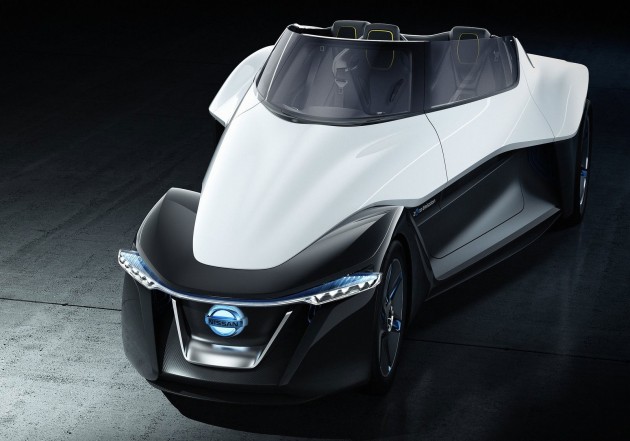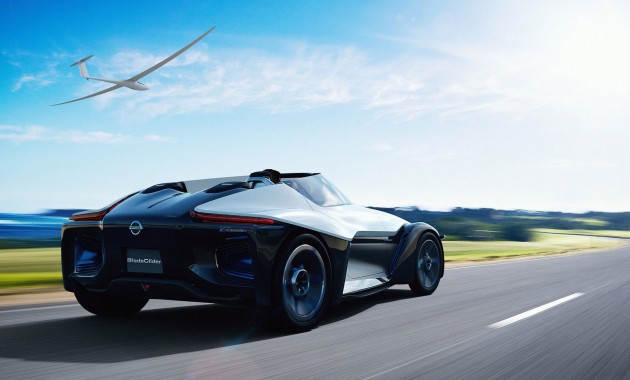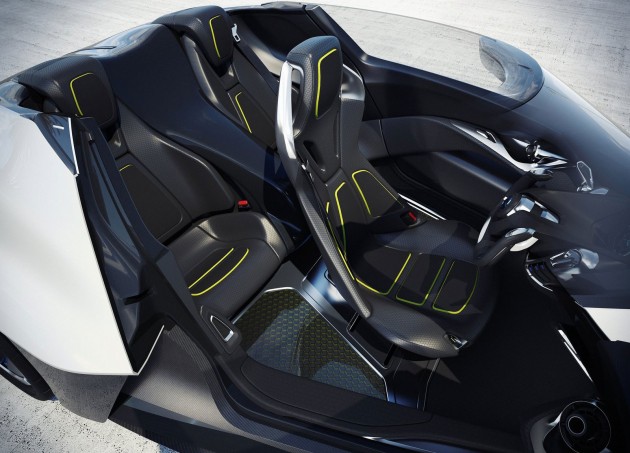
If Nissan has its way, our future world would be filled with arrow-shaped electric cars. We’ve just seen the ZEOD RC Le Mans electric racecar and on its way to the 2013 Tokyo Motor Show is this, the Nissan BladeGlider Concept.
More than a concept, the BladeGlider is both a proposal for the future direction of Nissan EV development and an exploratory prototype of an upcoming production vehicle from the world’s leading EV manufacturer. Developed with form following function, Nissan crafted the vehicle’s unique layout to give the driver and passengers “sustainable exhilaration”.
Its shape alone, with a narrow 1.0-metre front track, challenges the convention that has dominated our roads since the birth of the internal combustion engine. The BladeGlider has its conceptual roots in two aerial images: the soaring, silent, panoramic freedom of a glider and the triangular shape of a high performance “swept wing” aircraft.

In terms of engineering, the BladeGlider’s developmental focus was aerodynamics: achieving low drag (cdA) while generating road-hugging downforce. Having the front wheels close together reduces drag and enhances manoeuvrability for high-G cornering, assisted by 30:70 weight distribution. Downforce is created by the highly rigid yet lightweight carbon-fibre underbody, hence the lack of drag-inducing wings.
When the BG matures into a production car, it could be Nissan’s first use of in-wheel motors, which provide rear-wheel propulsion with independent motor management, while also contributing to freedom of upper body design and space-efficient packaging.
To power the electric motors, the BladeGlider employs Nissan’s lithium-ion battery technology as used in the production Nissan LEAF, which will go on sale in Malaysia soon. Battery modules are mounted low and towards the rear to enhance stability and handling.

This glider can be shared with two passengers in a V-shaped seating configuration. Passengers sit at the longitudinal centre of gravity to maintain the car’s balance at all times. The centre-driving setting also enhances the driver’s sensatory experience with a near-360 degree view.
As a final touch, the driver’s seat automatically slides laterally when you open the door, enabling easy access to passenger seats.
“I think that the excitement of the racing car should be mirrored in the excitement of driving the road car,” said Ben Bowlby, director of Nissan Motorsport Innovation, who has supported the BladeGlider’s development. “I think there are elements we can bring from the race track to make these future road cars more exciting, more fulfilling and give greater driving pleasure.”
Looks a little like the BMW i8 from the rear three quarters, don’t you think?
No comments:
Post a Comment